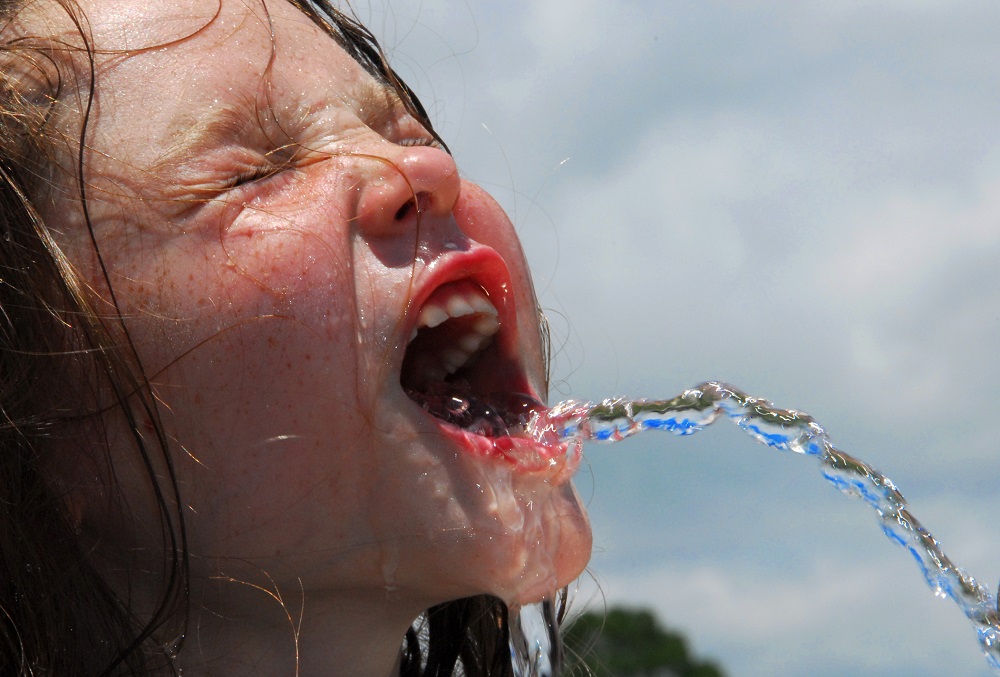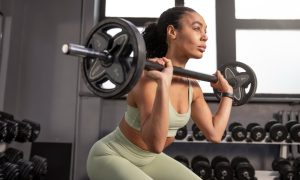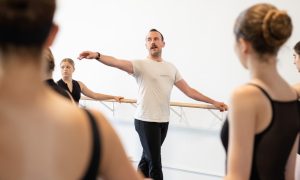Without question, water is an incredibly important ingredient for life. We can live far longer without food than we can without water. H2O is at the center of innumerable chemical reactions in each of the human body’s cells. With sweating significantly and physical exertion (the second often causing more of the first), we need a lot more of it. And dancing in the summer certainly meets those conditions.
Beyond that, dehydration effects can negatively impact one’s dancing. Those include muscle cramping, decreased endurance and mental fogginess. Strangely enough, dehydration can set in before a sense of thirst is strong enough to notice, and one feels compelled to satisfy – especially when in an all-engrossing class, rehearsal, performance or audition.
That simply means that dancers need to stay consciously ahead-of-the-game when it comes to hydrating, and in the summer months particularly. Read on for how to avoid finding yourself thirsty and not easily able to re-hydrate (because, at that point, you’re already dehydrated). That can help you stay at peak performance all summer — and all year — long.
Be prepared — and think before, during and after.
Our body can only absorb so much water at one time. Drinking several cups at one time will likely only lead to having to go to the bathroom. As much as might be possible on any given day, start spacing out drinks a few hours before dancing. During dancing, make sure to have a water bottle on hand. Arrive with it full, so that you don’t end up without a chance to fill it. Invest in a non-BPA lined water bottle that’s durable and won’t leak. You’ll save money in the long run, relative to constantly buying bottled water (not to mention how much better it is for the environment).
Drink from your bottle during breaks and any other available quick times (such as waiting to go across the floor or watching a demo). Just be sure to be non-disruptive and respectful of class etiquette wherever you may be. Drink after dancing in order to replenish hydration that you likely lost. Not that it’s a pleasant observation, but drink until your urine is lemonade-colored or lighter. If you’re short on time, drinking is something that you can do while traveling, reading or writing, and more.
Cold might feel good, but it’s not actually best. Choose your hydration wisely.
Europeans drink water differently than Americans in one notable way — they drink it room temperature rather than chilled. That’s easier for the body to absorb as needed hydration. Yes, ice water is incredibly refreshing on a hot day, especially if you’ve gotten even warmer from being physically active. Perhaps opt for slightly chilled water, rather than water with ice.
And look toward other ways of cooling down — cool towels, breathable clothing and keeping lights low (or finding shade if you’re outside). You’ll also avoid having to hassle with ice and condensation from your chilled bottle making everything in your dance bag soggy. Apart from what temperature, what is best to drink? Water is the classic, no-fail go-to. But if you just need more flavor, there are other healthy options.
As health-conscious people know, avoid sugary drinks. All they provide are calories with no nutrition, a cycle of sugar high then crash and potential dental issues. Try adding a dash of lemon juice, or some other fruit juice, to your water. Fruit- and vegetable-infused water is growing in popularity. There are now even water bottles that do the infusing. Sparkling water is low- (or no) calorie, but keep in mind that the carbonation can cause gassiness and bloating. Not exactly things that we want to have while performing or auditioning!
Sports drinks can help replenish electrolytes (such as sodium and potassium), but beware of high sugar content. They can also be pricey, and we can replenish electrolytes through food (calories that we need to take in anyway). Overall, try experimenting with different options to see what works best for your wallet, taste buds, and body overall. Hydration is a never-ending need, one important enough to work at getting right for yourself.
Remember to fill up on hydrating foods.
Health professionals use to advise people to drink eight eight-ounce glasses of water per day. That figure has been questioned, and even somewhat debunked as arbitrary, because we now better understand the various factors involved in hydration. One of those is diet, because we don’t just drink water; we also eat it, as strange as that may sound. Think about how much starchy liquid ends up on the cutting board, and in the bowl, when you make a salad (with vegetables or fruits).
Being healthfully hydrated, therefore, is just one more reason to eat a primarily plant-based diet; fruits and vegetables contain high water content (relative to other foods), and that hydration is another nutrient we consume when eating fruits and vegetables (along with fiber and vitamins). Try packing a few easily portable fruits in your dance bag for a busy day of taking class and rehearsing — apples, berries, oranges, kiwis and grapes are all examples of great options.
Try carrot sticks, celery, pepper strips and cherry tomatoes for veggies. Hummus can be a great dip for those, with a bit of protein and healthy fat as well. These fruits and veggies can all be prepared and packed in ways that you can easily have as cooling, hydrating and energy-boosting snacks in a “take five” at rehearsal — very little mess and fuss involved.
It might not be as portable and all that clean (dribbles-down-chins, anyone?), but enjoy your watermelon this summer — a low-calorie, cooling and very hydrating snack that just about everybody loves. You’ll shine on stage and in the studio, your body fully hydrated and ready to rumba, battement or shuffle, whatever may fill your unique dancing day. Your body will return the favor of you taking care of it as best you can.
By Kathryn Boland of Dance Informa.















